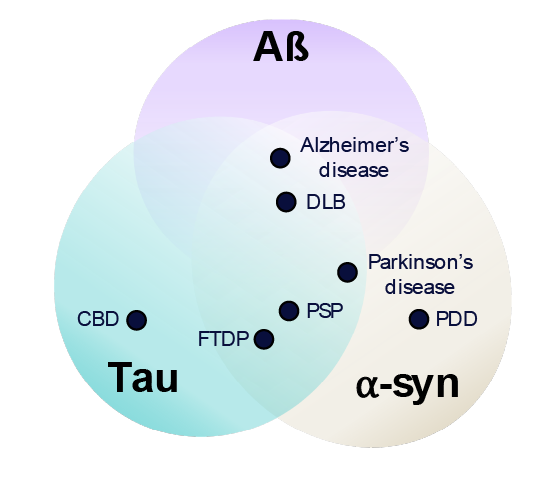Towards a universal treatment for neurodegenerative diseases

Amyloid fibrils play a major role in the development and progression of neurodegenerative diseases. In Alzheimer’s disease, amyloid-beta and tau fibrils are consistently found and closely associated with disease severity. In many cases, a third fibril, alpha-synuclein, is also involved. While these fibrils play different roles in disease mechanisms, they share a common structural feature—the amyloid fold.
Progress and Limitations of New Treatments
We are entering an exciting era in the treatment of neurodegenerative diseases, with a new generation of antibody-based therapies targeting amyloid-beta now reaching Alzheimer’s patients.
However, despite the optimism, these therapies are expected to have limited impact, as they focus on a single misfolded protein. In reality, amyloid-mediated diseases often involve multiple pathogenic proteins, including amyloid-beta, tau, and alpha-synuclein. Recognizing this limitation, some companies are beginning to explore combinations of antibodies to broaden their therapeutic reach.

The Solution Patients Need
Each monoclonal antibody must first demonstrate efficacy as a standalone treatment before it can be tested in combination. This stepwise approach means it could take decades before patients gain access to a therapy that effectively targets all the amyloid fibrils involved in their disease—a timeline that is simply not acceptable.
At Amyl, we’re taking a bold step forward. Instead of waiting, we are developing the treatment patients need next: a single, pan-amyloid immunotherapy designed to simultaneously neutralize multiple types of amyloid fibrils. Our approach has the potential to deliver broader, faster, and more effective outcomes for those affected by neurodegenerative and systemic amyloid diseases.